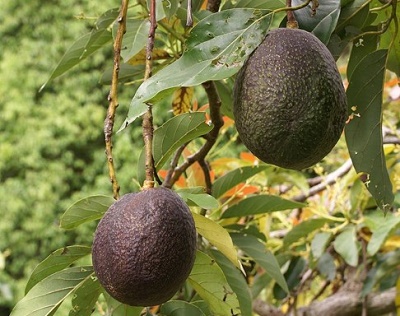Order: Laurales
Family: Lauraceae
General Overview: Persea americana, also known as avocado, is a species of evergreen tree in the Lauraceae family. It is native to Central America, but is now widely cultivated in other parts of the world, including California, Florida, and Mediterranean countries.
Morphological Features: The Persea americana tree attains a height of 9–20 m with a trunk diameter ranging from 0.3–0.6 m. The leaves, measuring 8–25 cm, are arranged alternately. Panicles of flowers, adorned with deciduous bracts, emerge from new growth or the axils of leaves. The tree boasts an annual display of thousands of inconspicuous blossoms, sprouting from racemes near the leaf axils. These small flowers, 5–10 mm wide, lack petals but exhibit two whorls of three pale-green or greenish-yellow downy perianth lobes. Each blossom features nine stamens with two basal orange nectar glands. The avocado fruit, classified as a climacteric, single-seeded berry, is distinctive due to the imperceptible endocarp covering the seed, differentiating it from a drupe. Typically pear-shaped, the fruit measures 7–20 cm in length, weighs between 100 and 1,000 g, and contains a large central seed measuring 5–6.4 cm. The species has given rise to various cultivars with larger, fleshier fruits and a thinner exocarp, thanks to selective breeding by humans.
Biological Characteristics: The fruit of the Persea americana tree is highly valued for its rich, creamy flavor and nutritional properties. Avocados are high in healthy fats, vitamins, and minerals, and are commonly used in salads, sandwiches, and other dishes. In addition to its culinary uses, avocado has also been used for its medicinal properties. The oil extracted from the fruit is used in skincare products for its moisturizing and anti-inflammatory effects, while the leaves and bark are used in traditional medicine to treat a variety of ailments. Overall, Persea americana is a highly versatile tree with a range of traditional and modern uses. Its cultural significance and economic value make it an important crop in many parts of the world.

